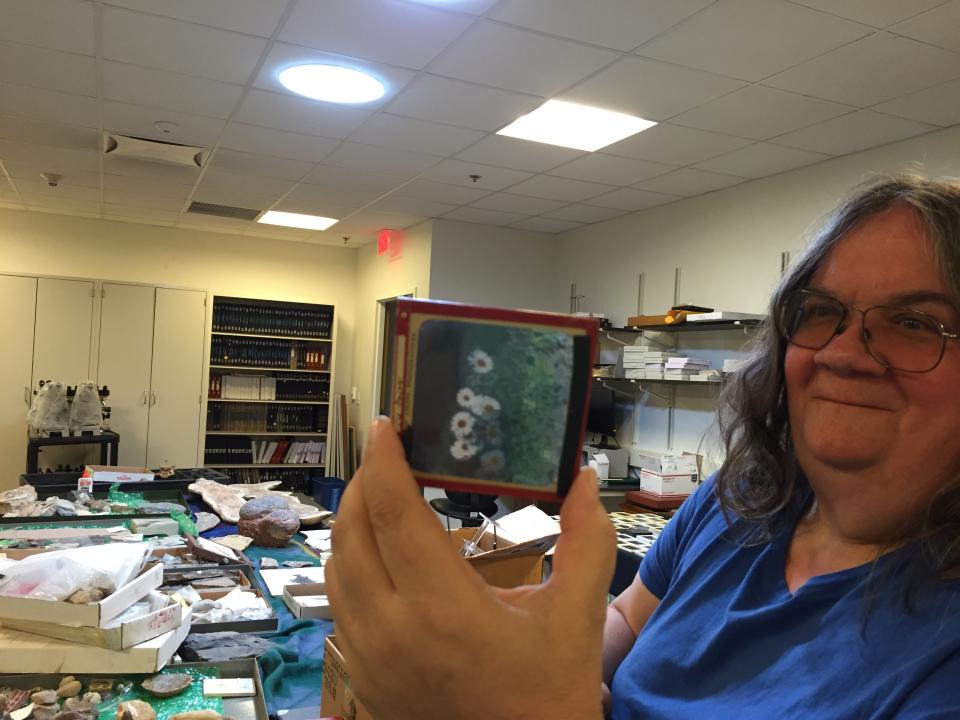Fossil Plant Collection
The Fossil Plant Collection (ASUPC) is a unique resource for the ASU Natural History community, supporting plant evolutionary research, teaching, and public outreach.

The Plant Fossil Collections are curated by Kathleen B. Pigg. Our holdings include around 15,000 megafossil specimens as well as coal balls and silicifications, a fossil and extant palynomorph collection, and extant wood and anatomical sections. Strengths of the collection include Late Paleocene, Eocene and Miocene floras of western North America, Gondawana floras of Australia, and Paleozoic and Cretaceous plant fossils of Arizona. We are currently digitizing our specimens for open access with Symbiota software.
Access the ASUPC On-Line Holdings
Visit our collections: Room: 155, 734 W Alameda Drive, Tempe Arizona 85282 Hours: Monday - Friday 9-5
History of the Collection
The ASU Fossil Plant Collection include specimens amassed by James E. Canright who came to ASU in the early 1960s. Canright assembled a core teaching collection and contributed materials from internationally significant sites such as the Rhynie Chert, Cayton Bay, the Sydney Basin of Australia and coal ball floras of the Midcontinent United States. With Canright’s research interests in basal angiosperm anatomy and palynology, he developed comparative wood, anatomical, and palynomorph collections. Materials from his students’ research projects added many Arizona coal sites and studies of various angiosperm families. Michael A. Cichan succeeded Canright in 1986 and during his short time at ASU he contributed further materials from Pennsylvanian coal-ball floras. Kathleen B. Pigg was hired in 1988 and has contributed collections from Pennsylvanian coal-ball floras, Permian Glossopteris floras of Australia, and Paleocene, Eocene and Miocene floras of western North America. Strengths include permineralized remains from the Late Paleocene Almont/Beicegel Creek floras of North Dakota and the Middle Miocene Yakima Canyon flora of Washington, including figured and type material from Pigg’s research program. The collections also house the Jack A. Wolfe Pine Cone Collection along with fruit and seed collections.
Additional Resources:
